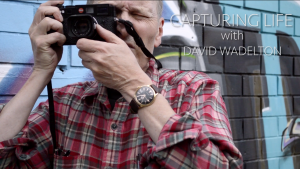I found this project perhaps the most challenging of all three. When we were given the brief, it definitely excited me. I brainstormed some ideas about who I wanted to interview pretty much straight away, so that process was very easy. However, as it got closer to the due date and the actual filming and editing process, it was a lot harder. I think this is probably to do with my limited experience in this kind of movie making. I did watch a few examples and the ones on the media blog helped put things into perspective. I was very stressed though, if I am honest and I was having one of those messy thoughts kind of feeling about the whole thing (which I only get when I’m really confused and doubtful about my abilities). I think most of my anxiety about this though, was just the overwhelming workload I suddenly had piled up. This wasn’t because I’d been lazy or anything, I had been sick and suddenly I had all these assignments to do. I had fun looking for found footage and I actually got in contact with the National Film and Sound Archive Australia to get permission to use some of their stock footage.
Once I actually got stuck into the filming though, I felt more at ease. I obviously was comfortable around my own dad, who was the subject of my interview, so that was fun. We got all the interview part down in about an hour. He just answered the questions naturally, I got a few different angles and that was that. Some of the ‘action shots’ is what I call them, took a bit more time just because I did a few takes, but even that was very straight forward.
I talked to Seth, my tut and organized to borrow a lapel mic and a regular rode mic for the interview. I wanted to have a back up rode mic for all the ‘action shots’ and use the lapel, as it captured sound better, for the interview part. I used my own DSLR for the filming.
Overall, I think the project went well, considering it was my first attempt at documentary style film making. I think I was not very good planning everything, I had a very brief list of shots I wanted and a list of questions as listed here:
Questions
- Name and profession / brief introduction
- How did you first get into photography?
- What do you love most about it?
- Tell us about the Northcote Hysterical Society
- What Camera do you use?
- What process do you go through post-production?
- Tell us about your current project?
Shots
- Found Footage (to go along with whatever relates to his topic, especially when talking about photographing houses and things in the 70s)
- Front on traditional interview (in front of studio backdrop)
- Close up, profile angle interview
- Action shot #1: sorting through film/photographs
- Action shot #2: Taking photos, in the street, getting ready etc.
- Footage of the studio (establishing, interior, him on the computer)
- ATMOSPHERE RECORDING AUDIO
I was very happy with the filming process overall and sorting through the footage didn’t take long either. The actual editing part, though, was my weakest. It took me a lot time to wrap my head around how I wanted it to start (the introduction etc.) and I didn’t even have a title until today. I’m still not convinced the ending transitions well, but I think I did my best. In the future I would allocate more time to planning and maybe consider doing some more research on the film and editing techniques that work with the project brief.
Capturing Life from Lucy Wadelton on Vimeo.
